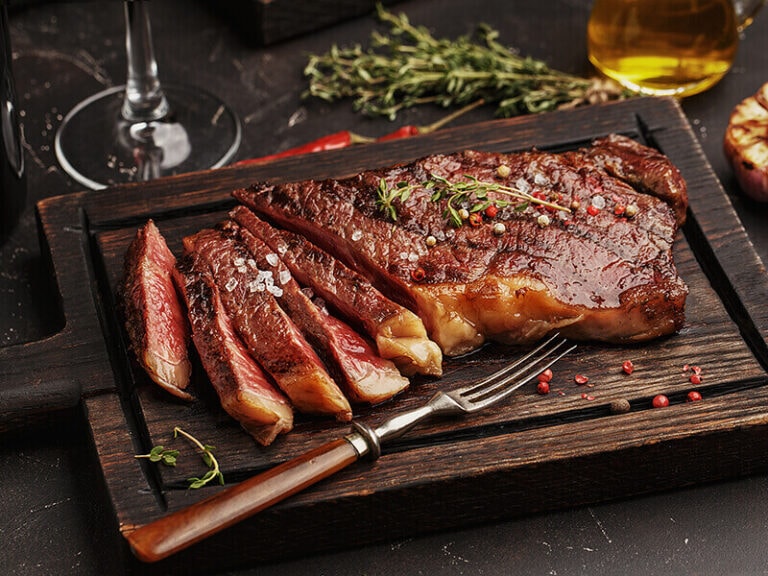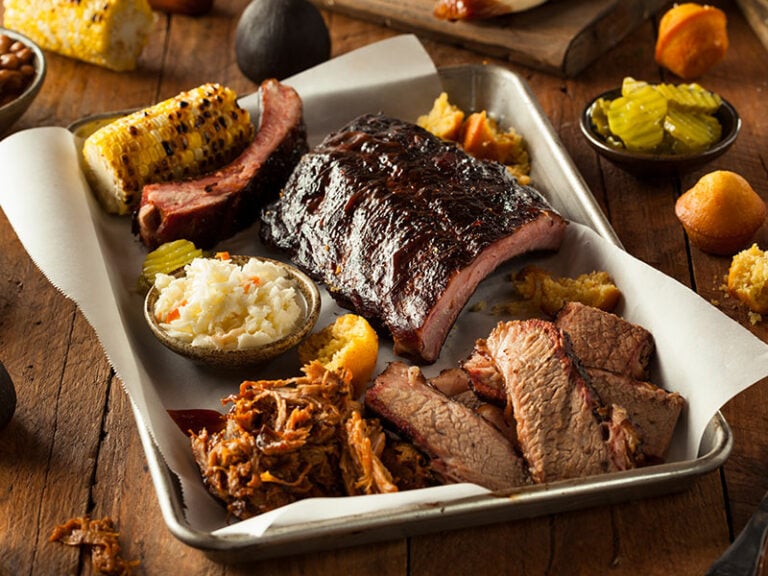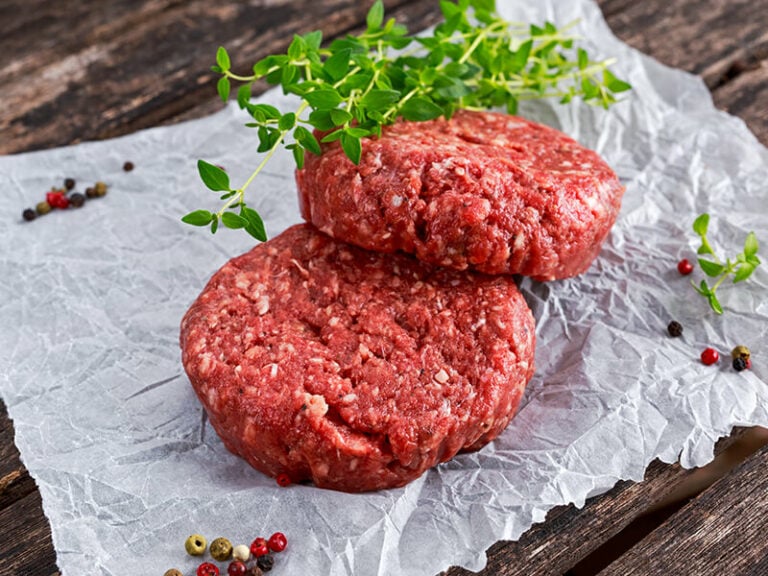“How long can you marinate steak” is no longer a question. It is not only a matter of time but also includes many other factors that affect the quality of your steak. There are many types of steaks from different kinds of meat with their requirements for marinating time.
Look no further because all the information and tips for marinating your steaks are here. If you follow this post, you will be capable of marinating sensational steaks for your family and friends.
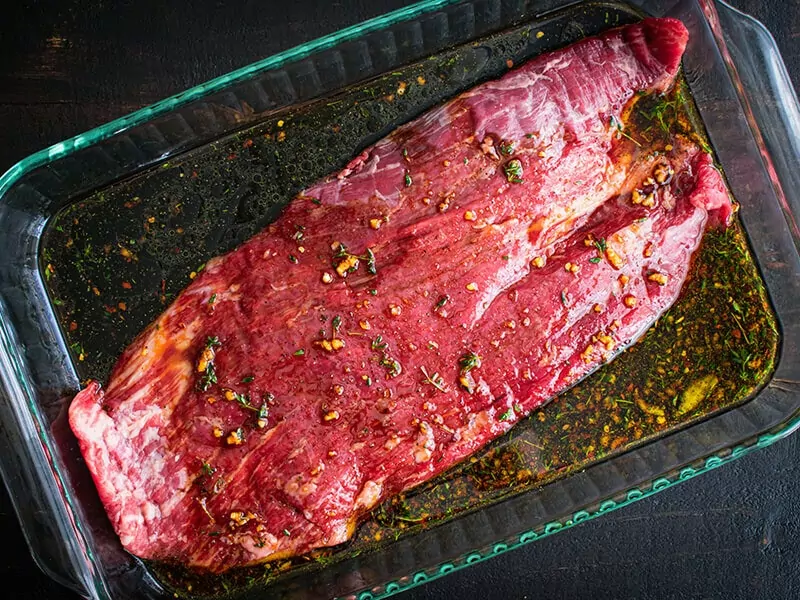
What Is A Steak?
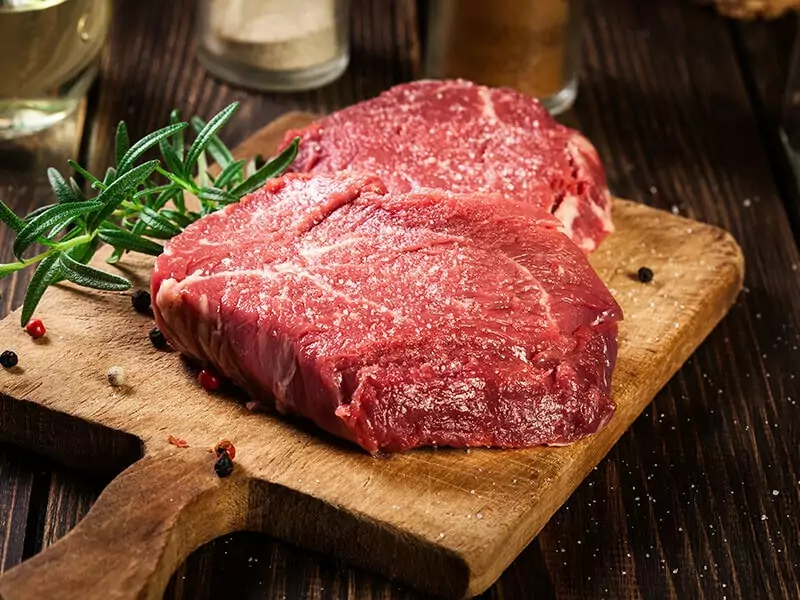
Steak is not a strange concept for longtime cooks or food lovers. However, you need to understand what steak is and some technical terms when enjoying this dish. Therefore, this section is here to help you gain in-depth knowledge about steak.
Speaking of steak, do you think of beef? However, steak and beef have several differences. In fact, steak is not only beef but all types of meat. This meat is usually cut across the muscle fibers and attached to a bone.
Besides beef, various types of steak come from different animals but under different names. A steak from lamb is called a chop. A fish steak is often referred to as a fish cutlet.
For pork, it is a bit special as there are pork chops and pork steak. They are all cuts of pork but from different parts. Pork chops are from the loin of the pork, whereas pork steaks from the butt and shoulder.
Steaks can be made from any kind of animal, as I’ve already explained, but in this post, I’ll just discuss the typical steaks that you can buy and serve to your family and leave out uncommon meats.
Why Do Steaks Need To Be Marinated?
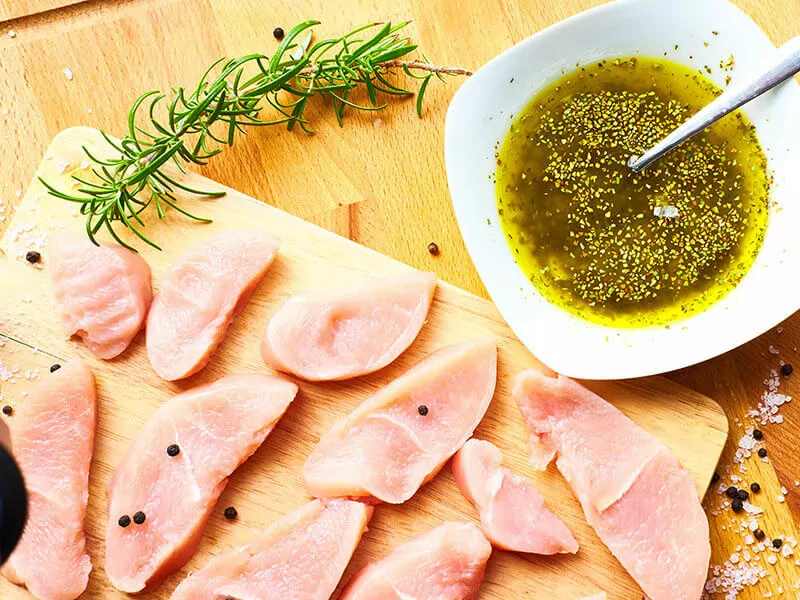
Before delving into the purposes of marinating steaks, you must understand the definition of marinating. Marinating is a culinary technique of making a flavorful liquid to soak food in before cooking it. And that liquid is called marinade.
Since ancient times, people have known to marinate meat with brine. The word marinate is derived from the French word mariner, which means “to pickle”.
Meat marinating serves two purposes. Firstly, it gives the meat additional tastes. A well-marinated steak will taste out of this world when you figure the right duration to cook steak at 400 degrees F.
Although some meat slices might not be of the highest quality, marinating them will greatly improve their flavor. Secondly, the process tenderizes the meat by adding more moisture to it.
A detailed comparison between marinated and seasoned steak.
Marinade, Defined
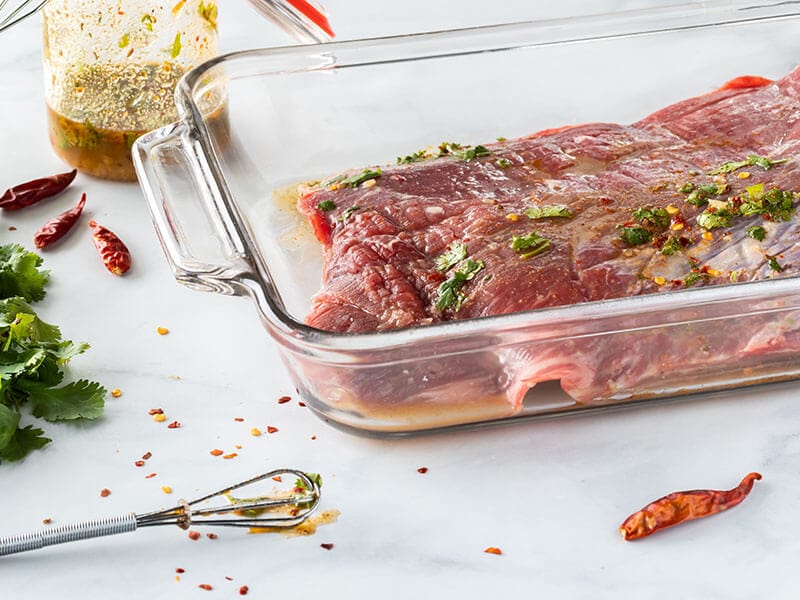
A marinade is a liquid mixture that consists of oil, seasonings, and often acidic ingredients. There are three main types of marinade which are acidic, enzymatic, and dairy-based. Let’s learn about each of the marinade’s characteristics.
Acidic Marinade
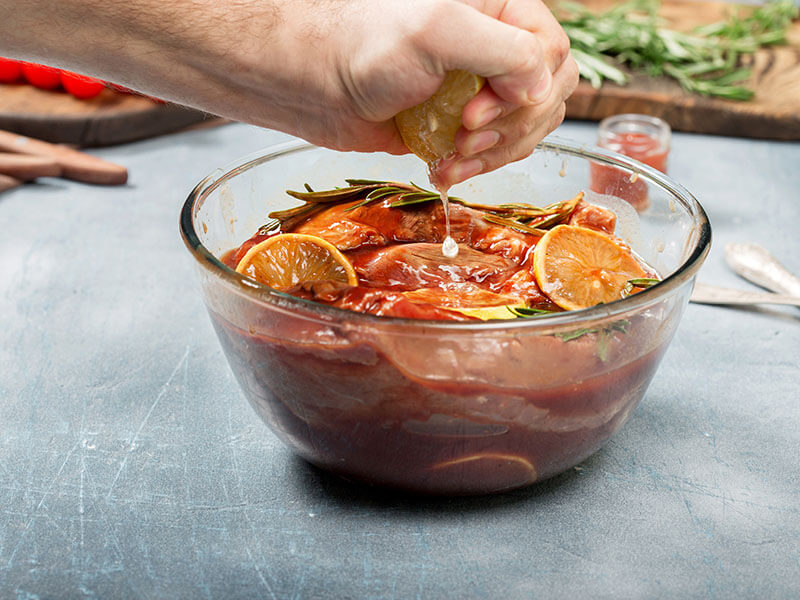
An acidic marinade is usually made of vinegar, wine, soy sauce, or, most commonly, citrus juice. Too much acidity will result in toughened meat because after a time of being soaked in the acid liquid, the bonds of the meat’s proteins will tighten and push out water.
Enzymatic Marinade
Mango, papaya, or kiwi fruit are often used to make an enzymatic marinade. These enzymes break down the connective tissues within the muscle fiber and collagen. Leave your steak in enzymatic marinade for too long, and it will become mushy.
Dairy-based Marinade
Buttermilk and yogurt are often dairy-based marinades. The amount of acid they contain is small enough that it does not damage the tissues like acidic ones. The calcium in the milk activates the enzymes in the meat and breaks down the tissues, softening the meat.
Different Kinds Of Beef Steaks Require Different Marinating Times
When it comes to beef steak, there are so many things to talk about. I think that everyone knows what a beef steak is but do you know that there are so many types of beef steak.
Overall, some of them are already tender and flavorful, so marinating them will partly enhance their textures and flavors. For this reason, they take less time to absorb the marinade than other cuts of meat.
Follow the table below that contains the most popular beef cuts to determine how long to marinate your beef steaks.
Tenderloin
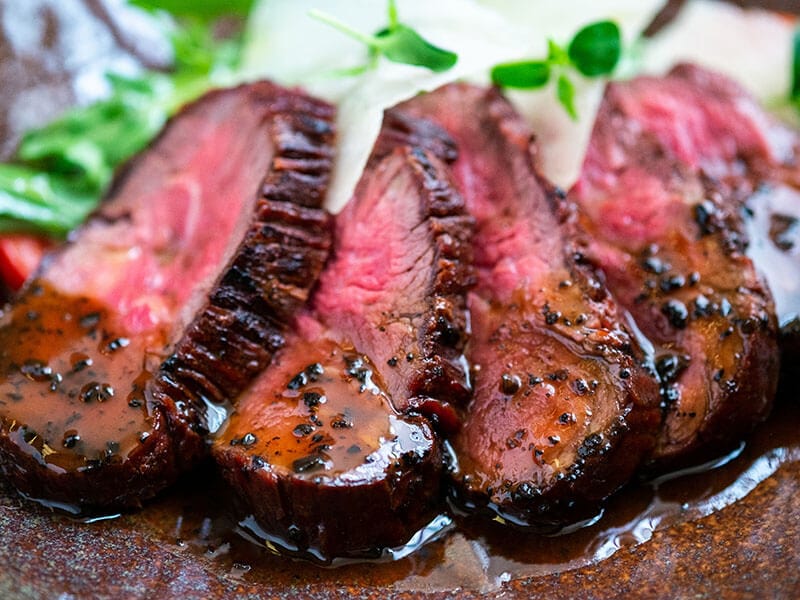
Tenderloin or filet mignon is the tenderest and tastiest part of a beef loin, which is located near the end of the last rib of the beef. The tenderloin is low in fat but has a buttery softness and a rich flavor that other cuts of meat can’t match.
The suggested marinating time for tenderloin is from 30 minutes to 1 hour at least and 2 hours at most.
The New York Strip
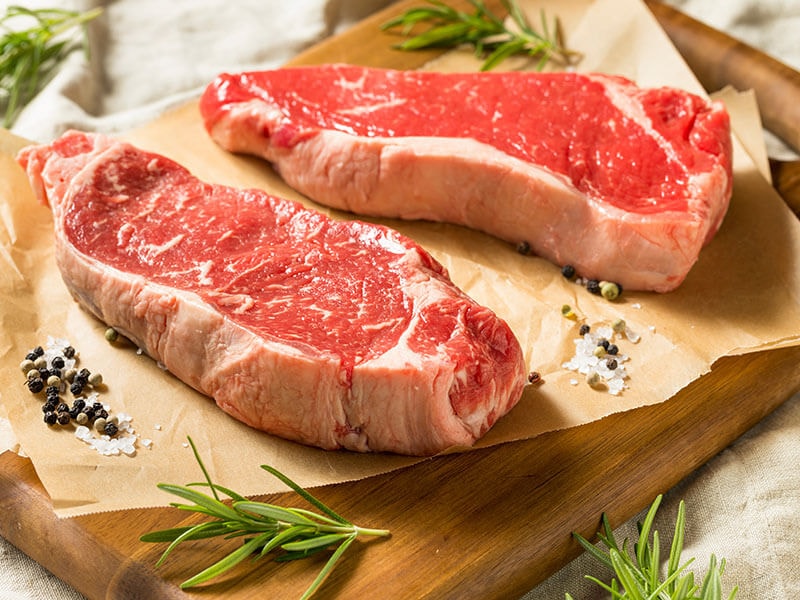
The New York Strip is a short loin cut that comes in a rectangular shape. This part of the cow doesn’t exercise much, so it’s extremely soft. It has a wonderful fatty edge and a beefy flavor with a perfect ratio of lean meat and fat.
For the New York Strip, the minimum marinating time is 30 minutes to 1 hour. You should never soak it for more than 2 hours.
Porterhouse
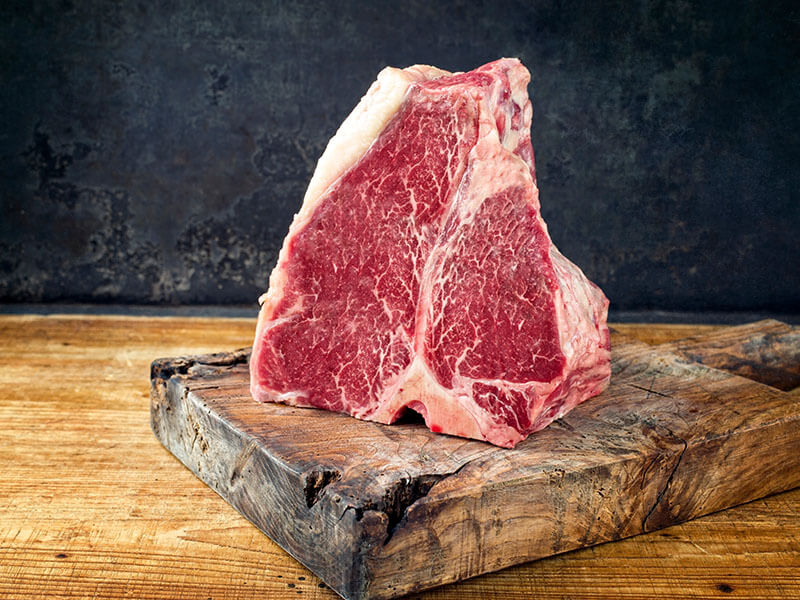
Porterhouse, also known as T-bone, comes from the rear end of the beef’s short loin. It is a perfect combination between the tenderloin and the New York Strip. The ideal marinating time for a porterhouse is 30 minutes to 1 hour but no more than 2 hours.
Ribeye
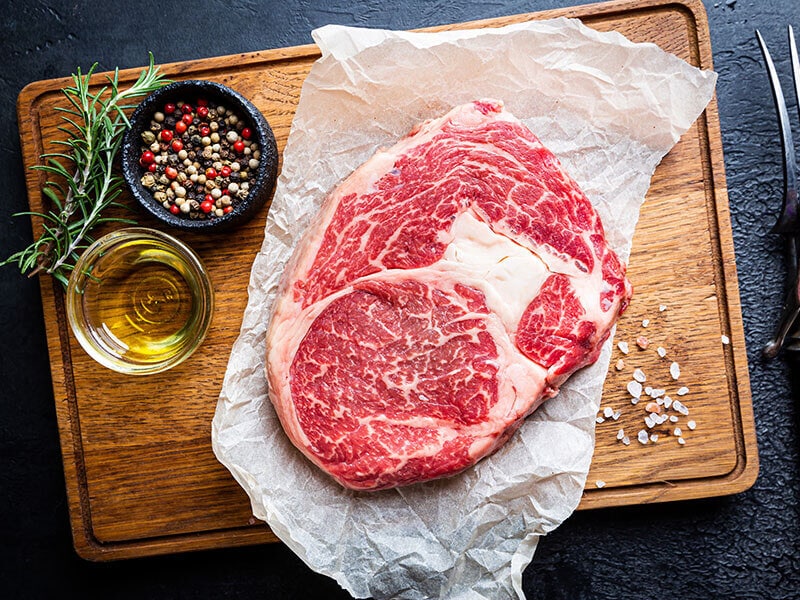
It is called ribeye because this cut is from the centermost of the cow – the eye. This is a special part of the cow with a lot of marblings throughout the meat. These marblings give the steak all the fatness and juiciness that everyone desires.
A minimum marinating period of 30 minutes to 1 hour is suggested for the ribeye, and you should not marinate it for longer than 2 hours.
Flank Steak
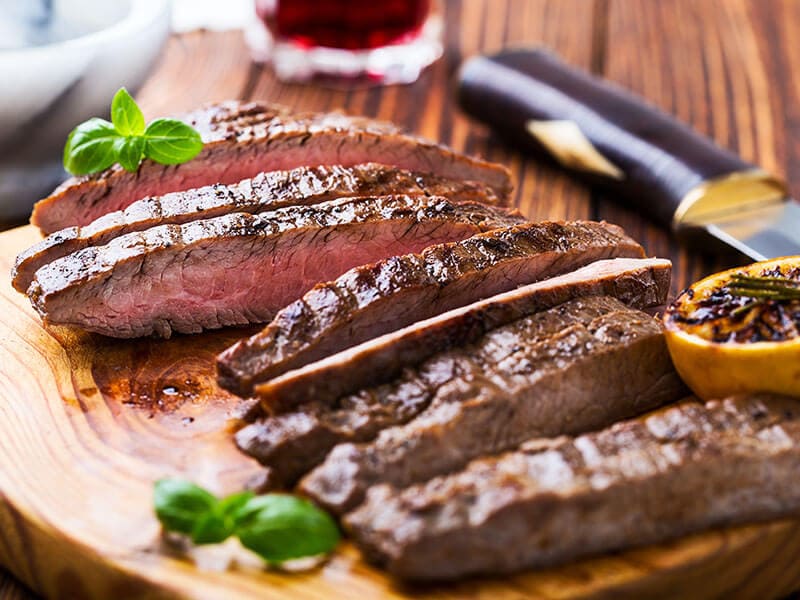
Just like its name, flank steak is a cut from the flank side of the cow. This part contains lean meat and is very low in fat. It is quite tough and fibrous compared to other cuts.
Flank steak needs a longer time to absorb the marinade, so the recommended marinating time is no less than 4 – 6 hours, while the maximum time is 24 hours.
Skirt Steak
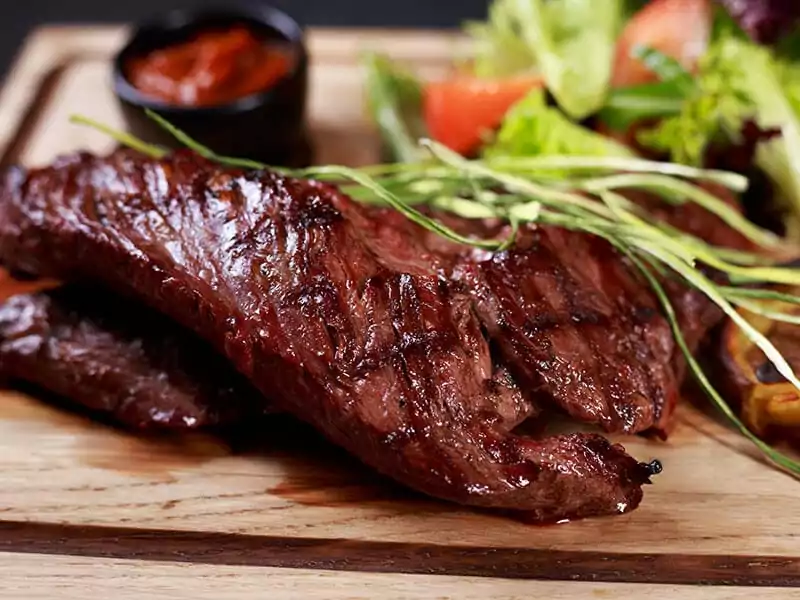
This long and flat cut of steak is from the cow’s plate. Even though it is not as tender as other steaks, it is packed with a beefy flavor.
Similar to flank steak, skirt steak should soak in the marinade for 4 to 6 hours. You can marinate it for 24 hours at most.
The most basic combo for marinating beef steak is salt and pepper. However, some beef cuts don’t have much beef taste and are very tough. This is when marinade comes in handy because it provides everything those cuts are missing.
Find your favorite beef steak marinade recipes with this informative tutorial.
Marinating Time For Other Types Of Steaks
Why does marinate time for different steaks vary? This is simply because the texture of each type of meat is different. Let’s find out the perfect marinating time for each of them in this section.
Here is the time chart for every steak that includes chicken, pork, fish, and lamb. With this table, you can determine how much marinating time each type of meat requires.
Chicken Steak

When it comes to chicken steak, people might think of beef cuts such as a hip steak or a shoulder blade steak. However, chicken steaks that are referred to here are made from poultry. The breast is often used because it has a similar structure to beef steak.
Whereas chicken meat is a rich source of protein, it is tough, dry, and naturally flavorless. That is the reason why it is important to marinate your chicken so that it is more flavorful and less dry.
Chicken steak’s surface is less dense compared to beef steak. Therefore, it is not necessary to soak the chicken in the marinade overnight like some thick beef steaks.
There is various information regarding the recommended marinating time for chicken. But with chicken steak, it depends on the steak size and the marinade’s main ingredients.
If you don’t leave it long enough, the flavor won’t penetrate. However, over-marinate the meat, and the result will be the same as what I mentioned above.
The recommended minimum marinating time for chicken steak is 2 hours. Even though 2 days is acceptable to retain the taste and the texture, 24 hours of marinating are ideal.
Learn how to make 5 savory different chicken steak dishes with 5 different marinade recipes.
Pork Steak
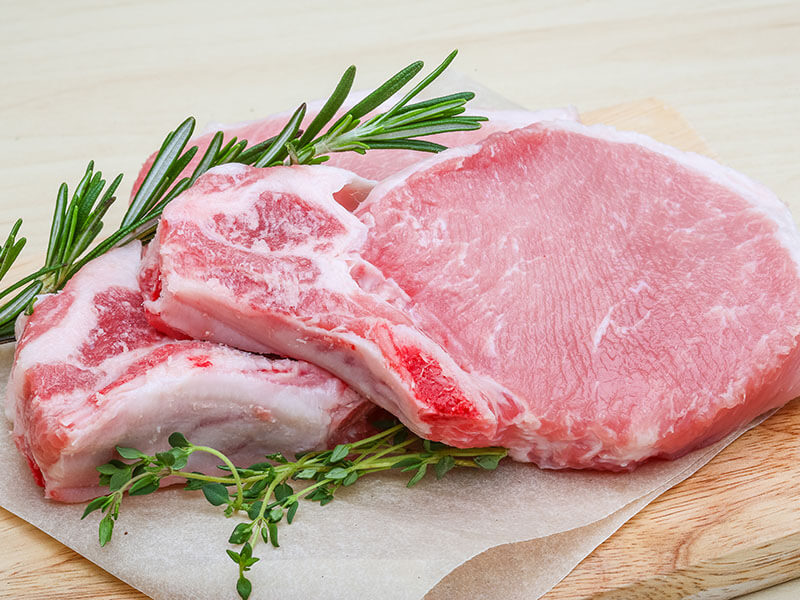
The difference between pork chops and pork steaks is that the former is leaner and contains fewer calories and fat. On the other hand, pork steaks have marblings that give these cuts more flavor and softness.
Although both of these cuts are slightly different, there is always room for additional flavors and tenderness. For pork steaks, the suggested minimum marinating time is 30 minutes, while it is 1 hour for pork chops, with 24 hours as the maximum marinating time for both types of cut.
Fish Steak

Cut perpendicular to the spine, fish steaks (fish cutlets) typically provide a thicker, more significant dish. They are usually made out of large fish like tuna, swordfish, or salmon. If you are cutting back on your calories, fish steaks are your go-to choice.
The marinade, with acidic ingredients like lime or lemon, can partly cook your fish if you leave it in for too long. Your fish steaks will result in another dish called ceviche – seafood that is marinated with lime juice.
Because of that, the ideal marinating time for fish steaks is very short, ranging from 1 to 2 hours, while the maximum time is 24 hours. However, 24 hours of marinating increases the chance of bacteria growing in your fish.
Follow this helpful guide to prepare 5 super easy and tasty marinades for salmon steaks.
Lamb Steak
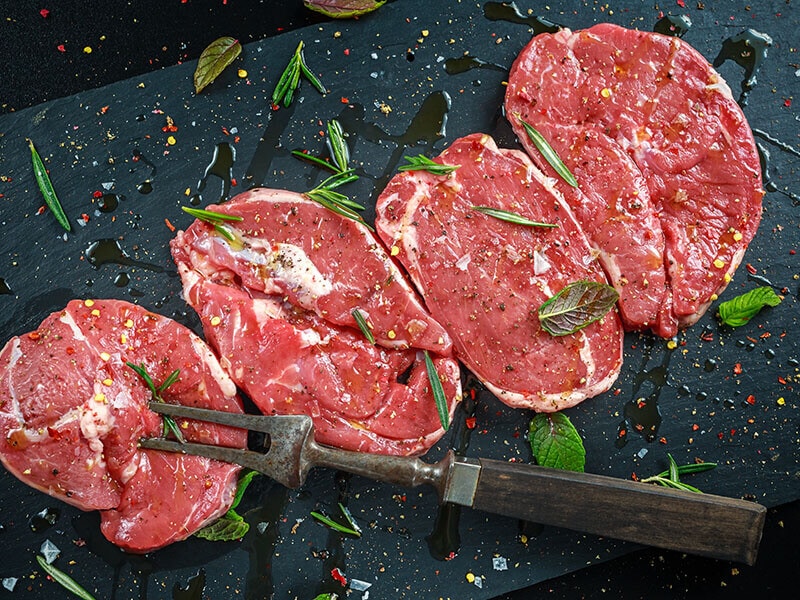
There is no accurate definition for lamb steak and lamb chop, but generally, they are meat cuts from the rib, loin, sirloin, and shoulder of the lamb. These lamb steaks are extremely robust and have a significant grassy hint.
Lamb steak itself is already tender and flavorful; however, there is nothing wrong with being a little extra.
One of the dairy-based marinades that go hand in hand with lamb is Greek yogurt. The acid in the yogurt emphasizes the delicious flavor and reduces the unpleasant aroma of lamb that many people are afraid of.
What makes lamb steak special is that the longer it sits in the marinade, the better it tastes. Between 2 hours and 4 hours is the minimum time required for marinating lamb steak, and up to 24 hours in the fridge.
Marinating 101: Step-By-Step Guideline To Marinate Your Steak
This section will help you become the marinating master with detailed information on how to marinate your steak. Make sure to give it a skim.
Ingredients For Every Marinade
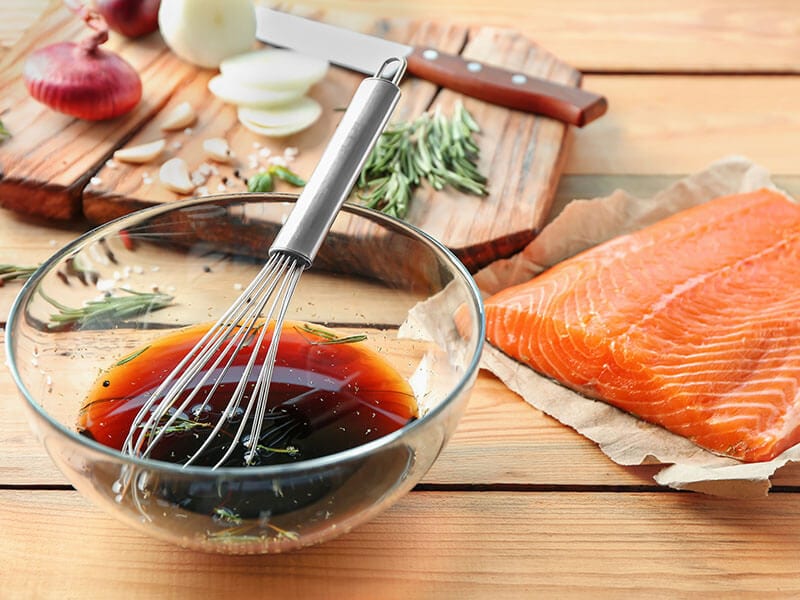
These are the basic ingredients for marinades in general. You can easily customize it with anything you have because no specific recipe is needed.
Acid
Vinegar, wine, citrus juice, or fish sauce are important to any marinade recipe. Never overuse them in your marinade since too much acid will cause negative impacts on the flavor and texture of your steak.
Basic Oils
Use oils from peanut, toasted sesame, olive, and avocado to establish the tone of the taste profile you want for your marinade. Your marinade ratio should be approximately 3 parts oil to 1 part acid.
Aromatic spices
There is a huge variety of aromatic spices that you can use to enhance your steak in terms of flavor and smell. Blackened seasoning, Italian seasoning, dill, fresh basil leaves, fennel, sage, thyme, marjoram, and oregano are some of my suggestions.
Sugar
Your marinade will need roughly 2 tablespoons of sugar for every 1/2 cup of oil. Brown sugar, honey, maple syrup, and agave syrup are some of the sweeteners you can use.
Salt
Salt is just essential to every recipe, but I recommend exploiting the saltiness from liquid form recipes like soy sauce, Worcestershire sauce, and fish sauce as they blend with other ingredients faster. If you prefer fine sea salt, that is fine but dissolve it before use.
Steak Marinating Process
Look for your favorite marinade recipe and begin to go into action. Follow these steps, and your marinated steak will be the best.
Step 1: Prepare Your Steak
Prioritize fresh steak. If your steak is frozen, give it some time to defrost completely. For thick cuts that are low in fat, you can pierce through them with a knife in several places.
Step 2: Make Your Marinade
This step is extremely simple; you just need to mix all of the ingredients mentioned above in a bowl. Make sure you follow the ratio for each ingredient. Sugar and salt need to be stirred until solvent.
Step 3: Storing Your Steak
Pour the marinade into a bowl or a plastic bag. Then put in your defrosted or fresh steak. After that, turn your steak evenly to coat the marinade. Finally, store it in your refrigerator according to the time chart for each type of meat.
This video illustrates how to marinate your steak step by step.
What If I Marinate The Steak For Too Long?
Many people think that the longer they marinate their steak, the better it will taste. However, this belief is completely wrong. Not only does it affect the flavor and the texture of your steaks, but it is also dangerous to consume these types of food.
Over Marination Damage The Texture And Flavor Of Your Steak
Marinating steak for days will result in counter effects. As stated in the above section, the acidic and enzyme ingredients from the marinade can start to break down the fibers of the steak. And the result is mushy (or tough) and over-flavored steak.
What will steak become after being exposed to a pineapple-based marinade for too long?
The Risk Of Bacteria Built Up
According to the Federal Food Safety guidelines (1), leaving fresh food in the fridge for too long can lead to spoilage and bacteria growth. This is because the marinade is made from various ingredients with the potential to have harmful bacteria.
The Secrets To Marinating Super Delicious Steak
Marinating meat is a complicated process. There are so many things that need to be executed precisely. But if you follow these informative tips, the resulting steak is incredibly high quality.
Don’t Poke Holes On The Steak Surface
People have different takes on this subject. Those who poke holes in their steak argue that doing so before marinating will allow the flavors from the marinade to penetrate deeper into the steak.
On the other hand, people say that poking holes in the meat is wrong. They claim that these holes will cause the juice to leak out of the steak, leaving it dry. Secondly, these holes in the steak make it look unappealing, especially for those with trypophobia.
My suggestion is always to try your best to retain the juiciness and the moisture of your steak as they are the main characteristics of a steak, making it tender and flavorful.
Therefore, it isn’t recommended to make holes in the steak. Let your steak rest naturally in the marinade if you want it to absorb all the flavor and retain its tender texture.
Don’t Use An Aluminum Container

The reason behind this is when aluminum is exposed to acid ingredients in the marinade, it will create a chemical reaction that will leach aluminum to your steak. The steak will be affected in terms of color and flavor.
Instead of using aluminum containers, non-reactive containers like stainless, steel, or glass containers are safer alternatives. The airtight bag with a ziplock is also a good choice.
Never Use The Same Marinade Twice
For food safety, the re-use of marinade is prohibited because it can contain bacteria that cause foodborne illness (2). However, if you don’t want to discard your savory marinade, you can boil it for 5 minutes and serve it as a sauce.
Acidic Ingredients Are Essential
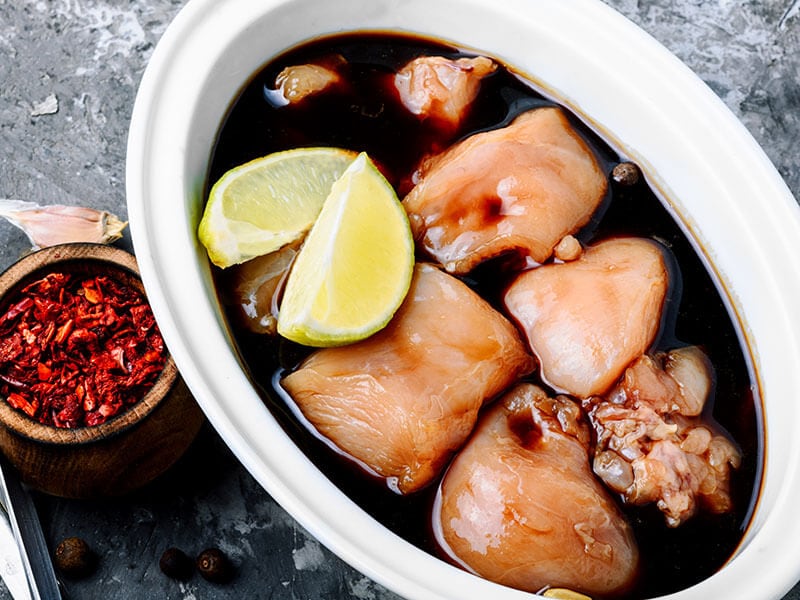
I know I talked a lot about how acidic ingredients react to your meat, but I must repeat it here. These ingredients tenderize the steak and help the flavor infuse deeper. Buttermilk, yogurt, wine, citrus juice, and vinegar are best suited for marinating.
Fish Steak Is Different

Of the steaks I have recommended, fish steak is the tenderest and takes the shortest time to cook. It will become too mushy if soaked in the marinade for too long. Be mindful not to marinate the fish steak for more than two hours if your steak is small and thin.
How To Preserve Marinated Steak?
What should you do If you accidentally prepare too much marinated steak that you can’t possibly cook all of it in one go? Don’t worry; I’ve got you covered. This section will provide you with detailed tips to preserve your marinated steak.
Preserve Your Steak In Refrigerator
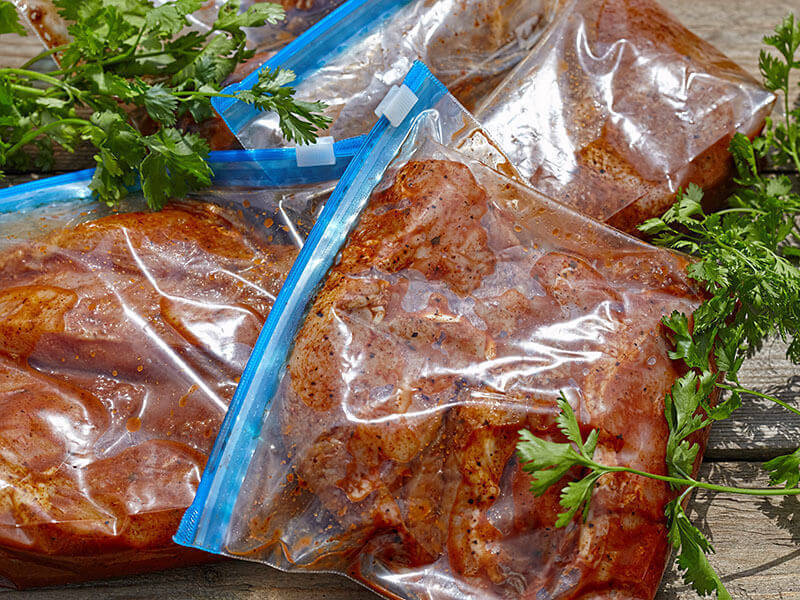
To avoid bacterial contamination, you need to contain both the marinade and the steak in an airtight bag. The ideal temperature of your refrigerator should be around 34°F and 40°F. You should not open the airtight bag too many times before cooking.
By doing so, you can preserve your steak for up to 1 to 2 days (3). After that mark, the steak is not safe to consume anymore.
Freeze Your Steak
Some may wonder if freezing steak is good. As for the marinated steak, I can assure you it’s one of the best ways to preserve your steak longer, although it comes with more work.
First, you must use porous plastic to wrap the marinated meat. Then, wrap the entire piece of plastic in aluminum foil before putting it in the freezer
The reason for so much wrapping is to avoid all the moisture evaporation from the steak that makes it dry. Another reason for doing so is to prevent freezer burn and bacteria build-up.
And lastly, you cannot freeze your marinated steak in the marinade because the longer the steak is exposed to the acid in the marinade, the mushier and the softer it gets.
FAQs
Besides the information from the previous sections, there are more questions related to marinating steak, so this section is here to answer some problems that may arise during the marinating process.
Marinating Your Steak Adds Special Twists To Its Texture And Flavor
Now, you have already been equipped with useful information on how long to marinate your steak, as well as other helpful extra information. Get your steak and marinade ready and begin your journey to become a marinating expert.
Thank you for reading this article. Please hit the like button and leave a comment if you find this post informative. Don’t hesitate to share it with your friends on social media. Thank you again, and wish you the best of luck!
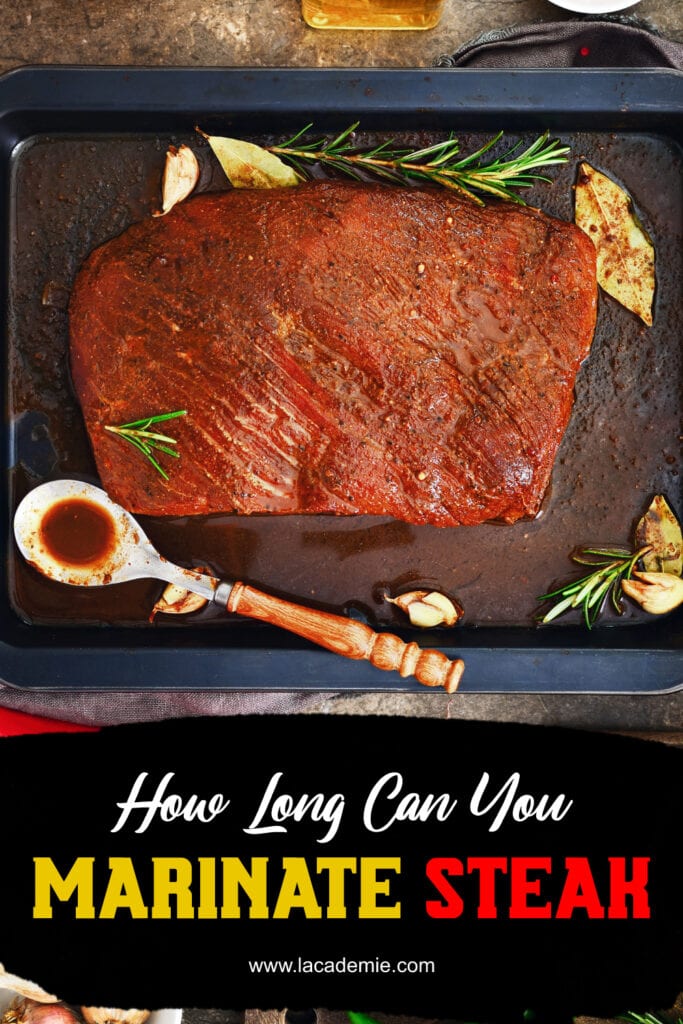
Reference
- U.S. Food and Drug Administration. 2022. Are You Storing Food Safely?.
- Dpbh.nv.gov. 2022. Food Establishments – Community.
- Ask.usda.gov. 2022. AskUSDA.

